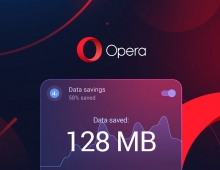
Google Releases Faster Emulator For Android Apps
Google engineers this week released a new Android emulator, which includes a significant performance upgrade and supports more hardware features, support for x86 chips, sensors and multi-finger input.
The Android emulator is a key tool for Android evelopers in building and testing their apps.
The new Android emulator comes with new Android SDK R17 and has built-in GPU support (Android 4.0.3 r2). In addition to the camera support, it's now possible to use a tethered Android device to supply inputs for sensors and multi-touch input. Google is also working on providing emulator support for more hardware features including Bluetooth and NFC.
Google has also improved the CPU performance of the Android emulator. Hardware floating point operation has been available for system images since Ice Cream Sandwich (Android 4.0), allowing CPU operations to be emulated roughly twice as quickly.
The Android SDK r17 developer tools also include x86 system images and host drivers (available through the SDK Manager), allowing the emulator to access the host CPU natively and offer significantly faster execution.
Google further acknowledged that because the Android platform allows deep interaction between applications, and with system components, an emulator with a complete system image is a much-needed tool for Android developers. New Google emulator virtualizes a complete device: hardware, kernel, low-level system libraries, and app framework.
Last but certainly not least, the new emulator has Android x86 support. This works by funneling the OpenGL ES 2.0 instructions from the emulator to the host OS, converted to standard OpenGL 2.0, and running natively on the host GPU.
The new Android emulator comes with new Android SDK R17 and has built-in GPU support (Android 4.0.3 r2). In addition to the camera support, it's now possible to use a tethered Android device to supply inputs for sensors and multi-touch input. Google is also working on providing emulator support for more hardware features including Bluetooth and NFC.
Google has also improved the CPU performance of the Android emulator. Hardware floating point operation has been available for system images since Ice Cream Sandwich (Android 4.0), allowing CPU operations to be emulated roughly twice as quickly.
The Android SDK r17 developer tools also include x86 system images and host drivers (available through the SDK Manager), allowing the emulator to access the host CPU natively and offer significantly faster execution.
Google further acknowledged that because the Android platform allows deep interaction between applications, and with system components, an emulator with a complete system image is a much-needed tool for Android developers. New Google emulator virtualizes a complete device: hardware, kernel, low-level system libraries, and app framework.
Last but certainly not least, the new emulator has Android x86 support. This works by funneling the OpenGL ES 2.0 instructions from the emulator to the host OS, converted to standard OpenGL 2.0, and running natively on the host GPU.





















